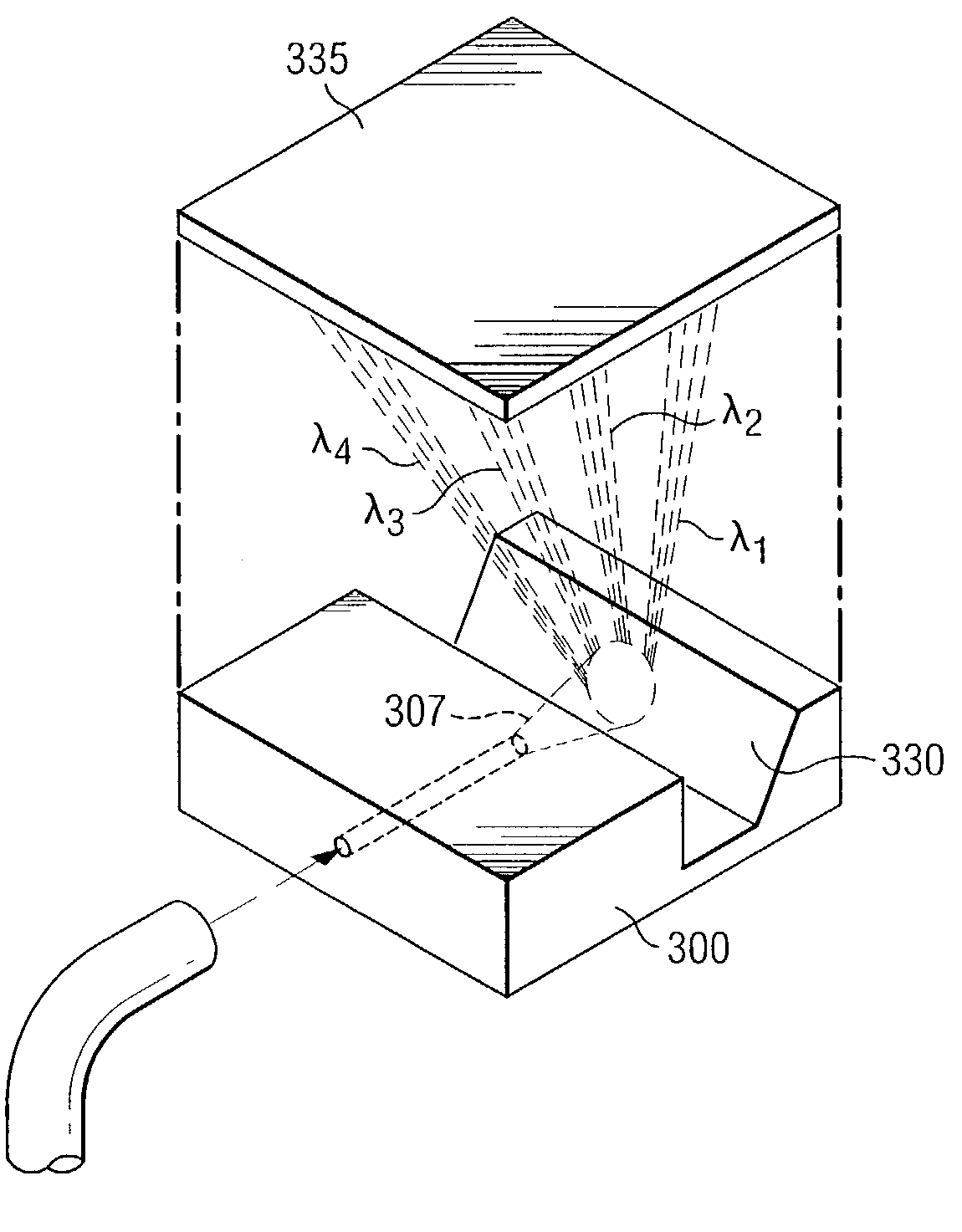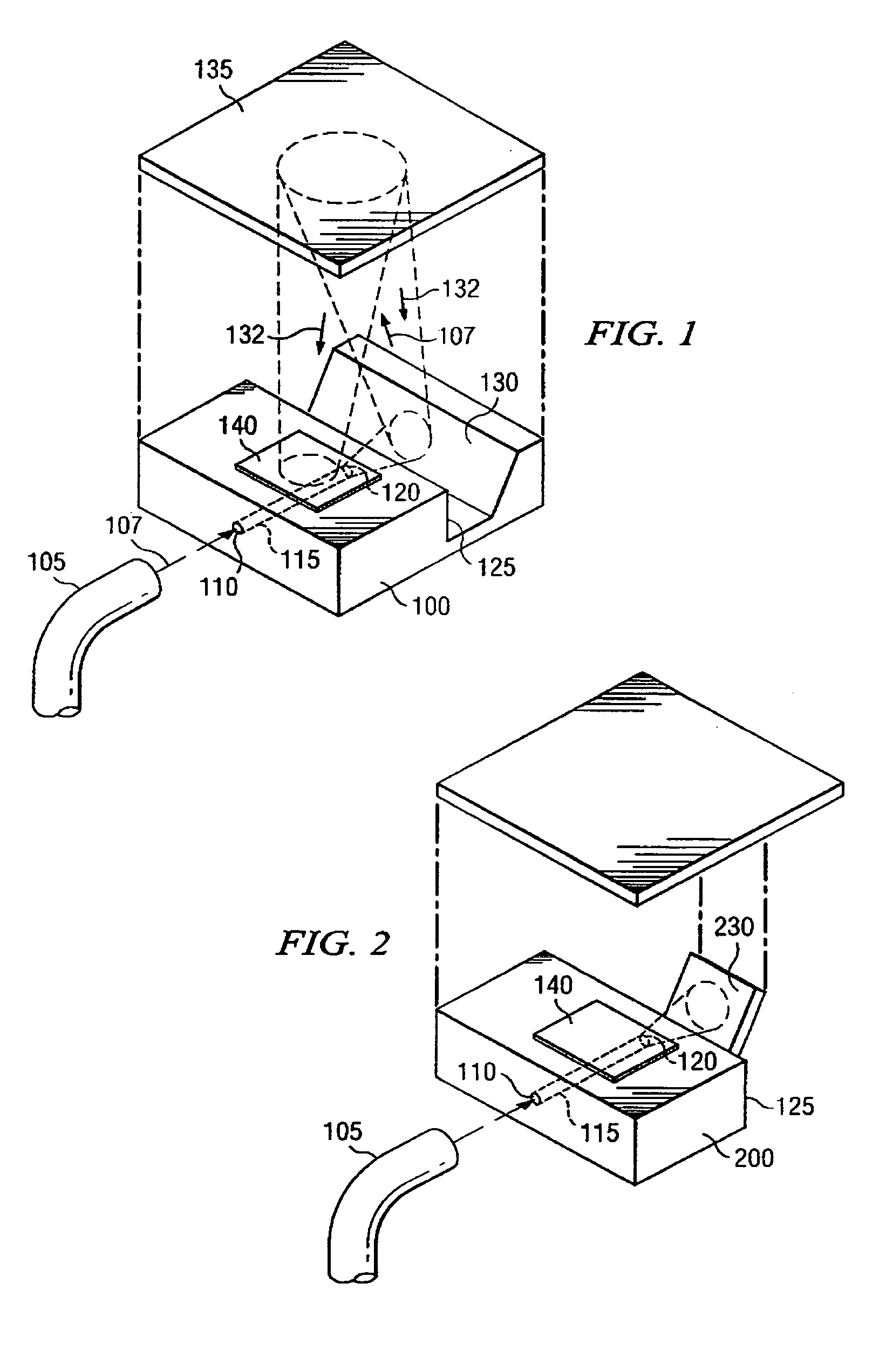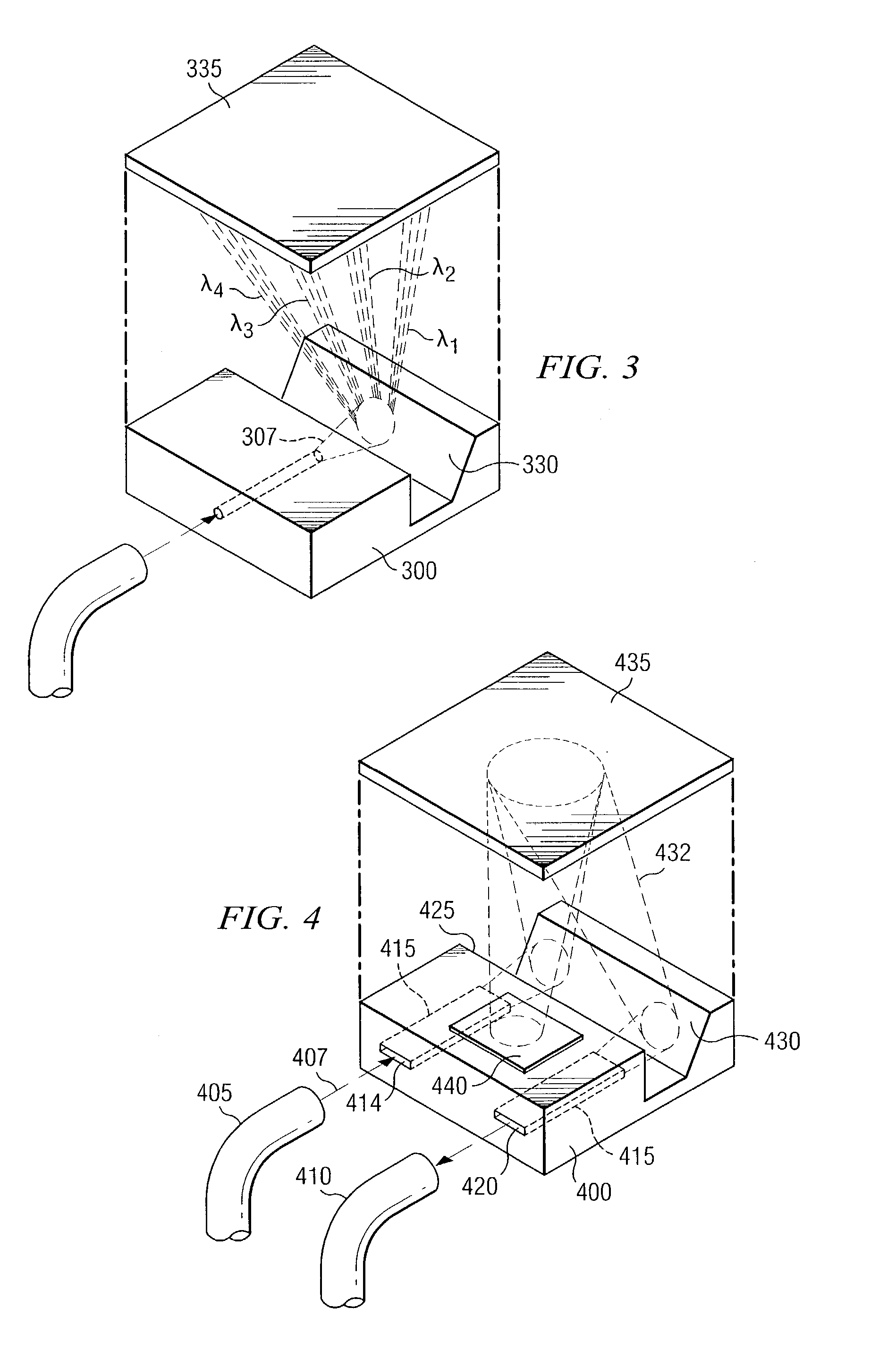Compact DMD-based optical module
a technology of optical modules and optical modules, applied in the field of compact dmd-based optical modules, can solve the problems of affecting the operation of free-space optical systems employing such components, affecting the operation of free-space optical systems, and being particularly susceptible to thermal stress, so as to improve the optical interface, reduce the risk of thermal stress, and be less sensitive to movement, vibration or mechanical stress.
- Summary
- Abstract
- Description
- Claims
- Application Information
AI Technical Summary
Benefits of technology
Problems solved by technology
Method used
Image
Examples
Embodiment Construction
[0016]One embodiment of an improved optical interface system is depicted in FIG. 1. In FIG. 1, an optical module 100 is depicted as comprising a unitary piece that includes a waveguide 115 that passes from a first waveguide port 110 to a second waveguide port 120, which is located on an inside face 125 of the module 100. The optical module 100 may comprise a variety of materials, including Silicon (Si), Silicon Dioxide (SiO2), III–V semiconductor materials (e.g., InP, GaAs, AlGaAs, or some other combination of one or more Group III elements with one or more Group V elements), and II-VI semiconductor materials (e.g., ZnSe, ZnMgSSe, or some other of one or more Group II elements with one or more Group VI elements). The optical module 100 also comprises a reflective surface 130 that can reflect light emitted from the second waveguide port 120 onto a DMD array 135. The reflective surface 130 may comprise a variety of surfaces and substances that reflect light, including, for example, a ...
PUM
 Login to View More
Login to View More Abstract
Description
Claims
Application Information
 Login to View More
Login to View More - R&D
- Intellectual Property
- Life Sciences
- Materials
- Tech Scout
- Unparalleled Data Quality
- Higher Quality Content
- 60% Fewer Hallucinations
Browse by: Latest US Patents, China's latest patents, Technical Efficacy Thesaurus, Application Domain, Technology Topic, Popular Technical Reports.
© 2025 PatSnap. All rights reserved.Legal|Privacy policy|Modern Slavery Act Transparency Statement|Sitemap|About US| Contact US: help@patsnap.com



